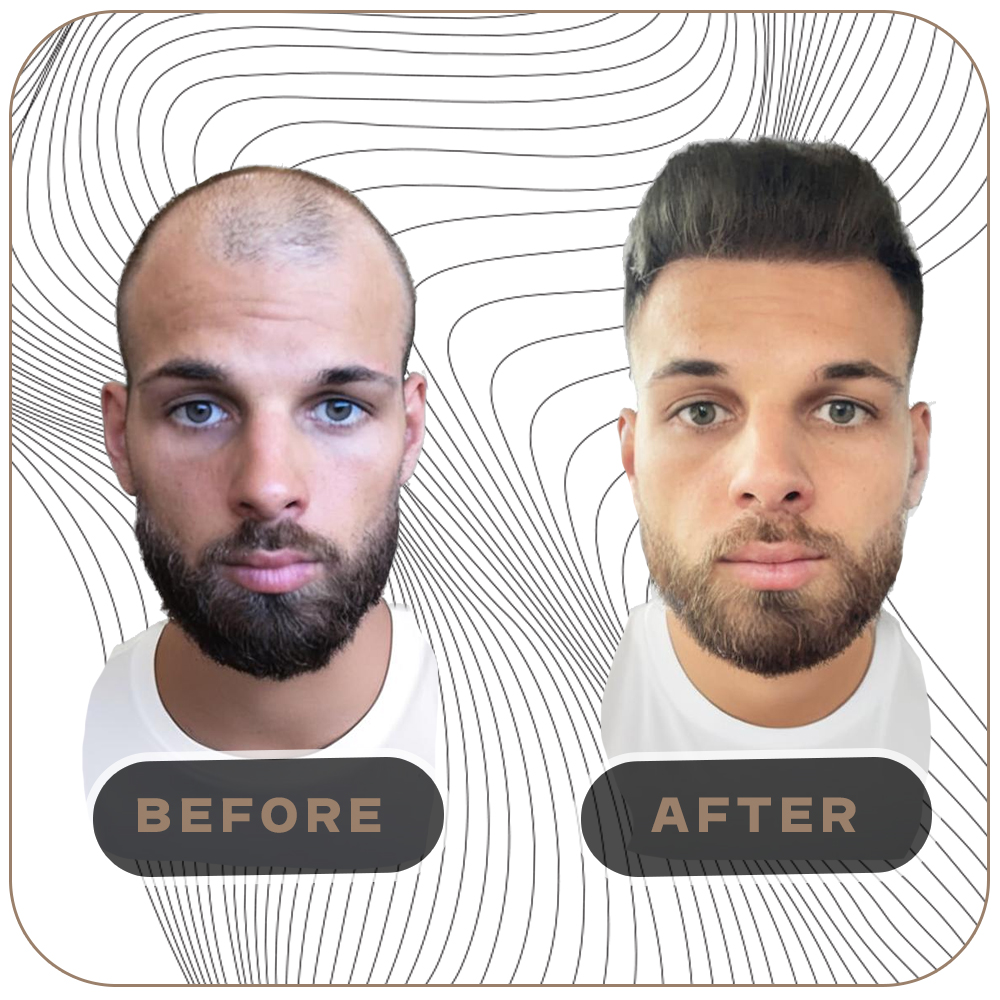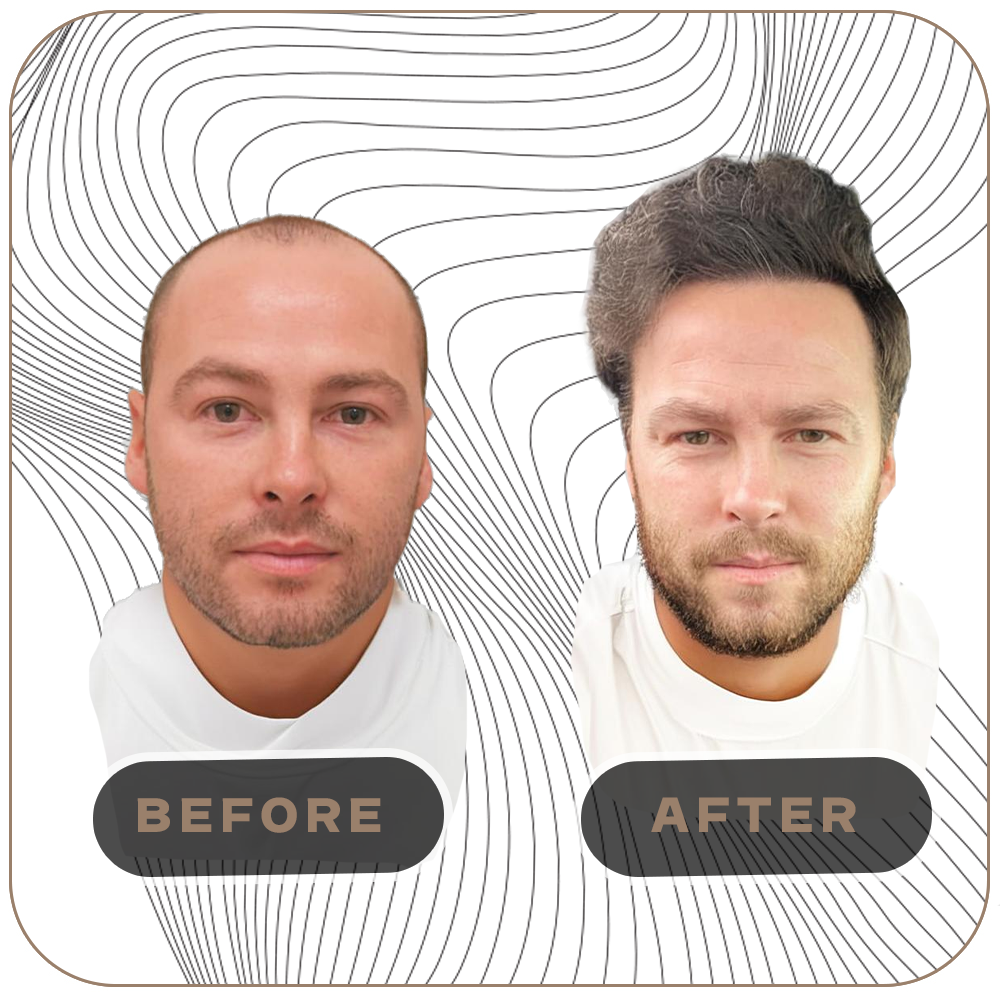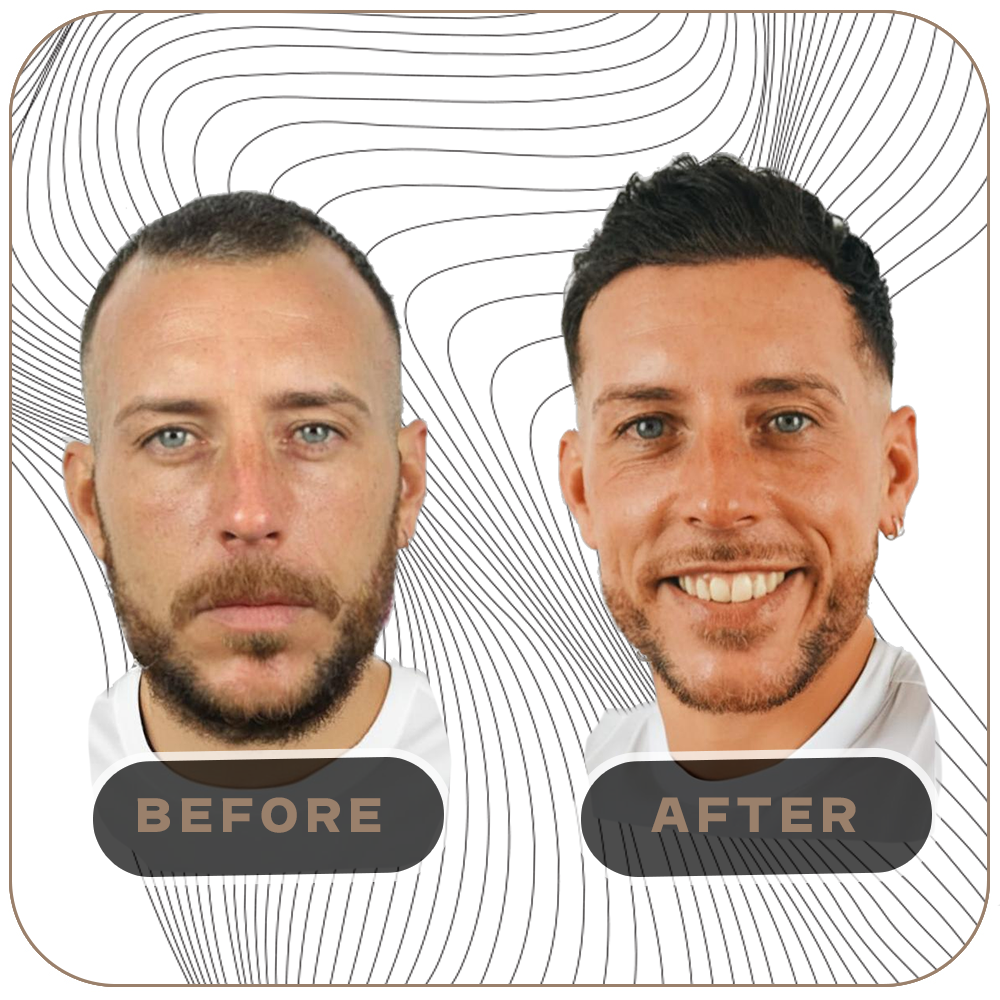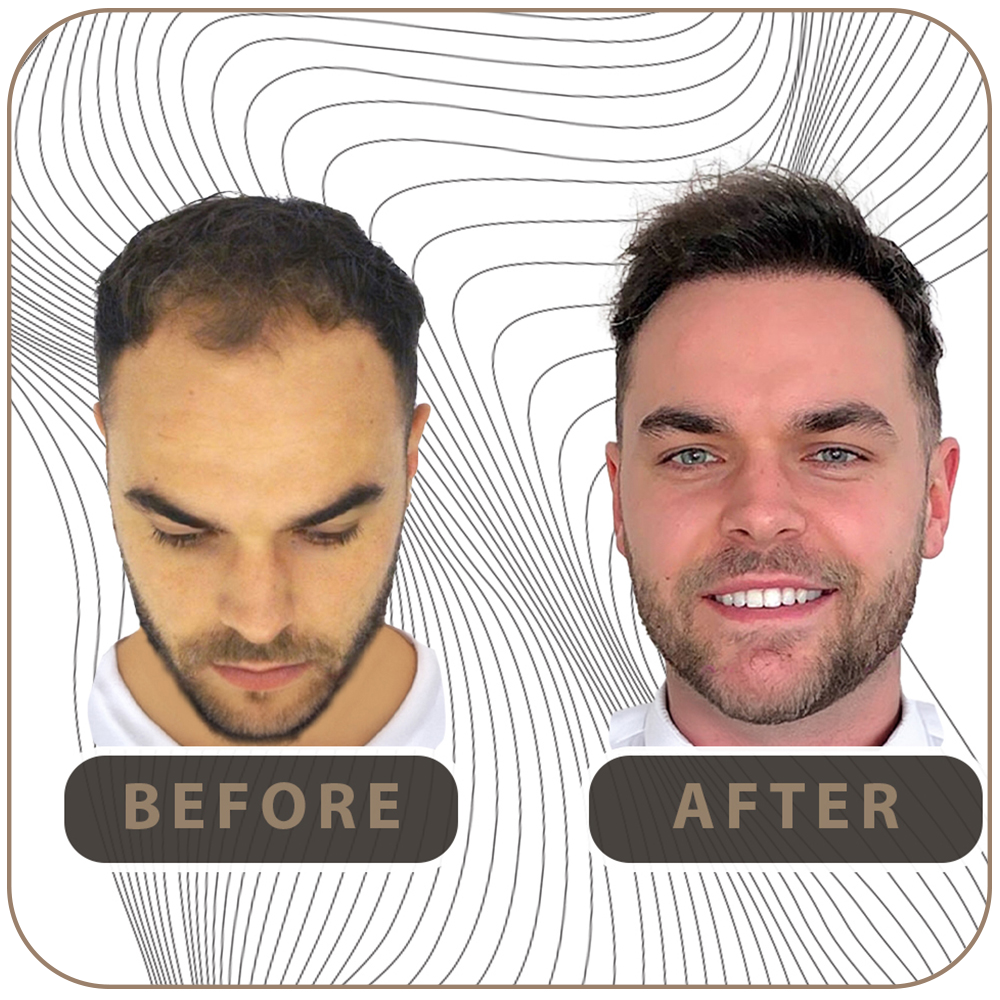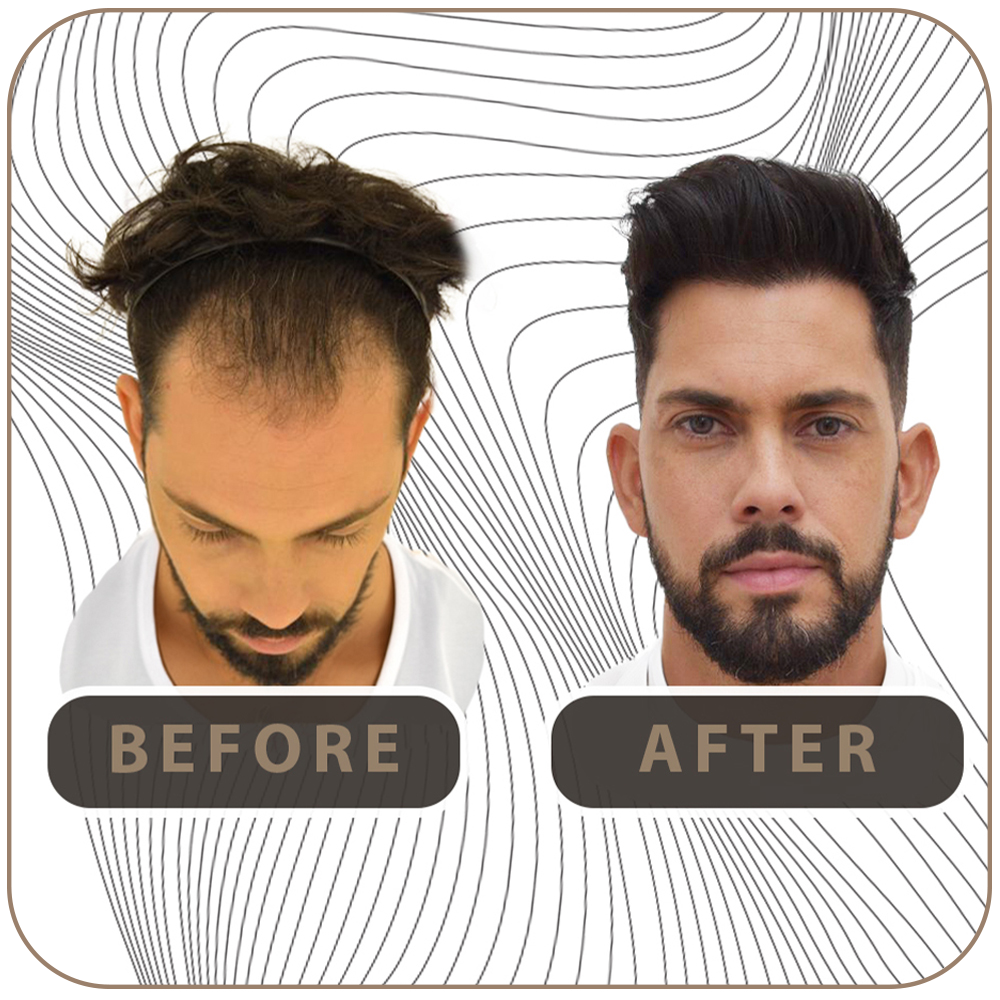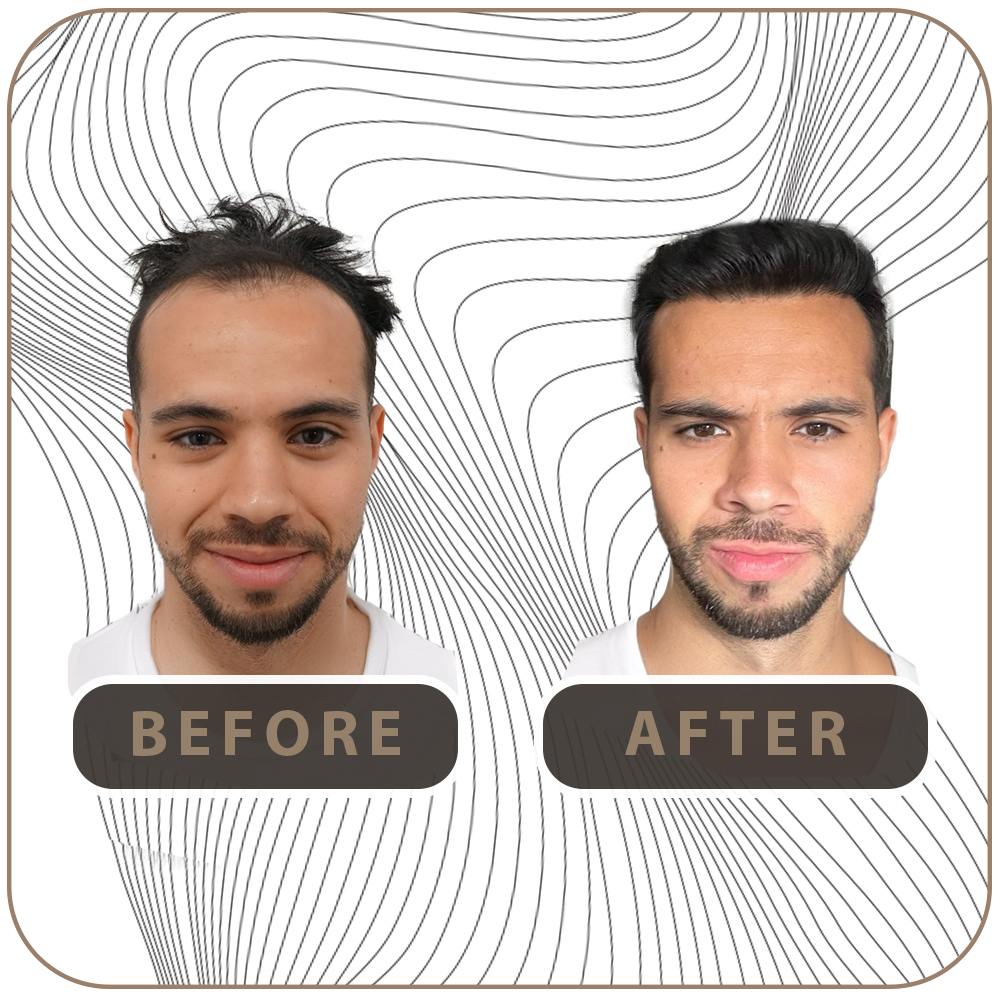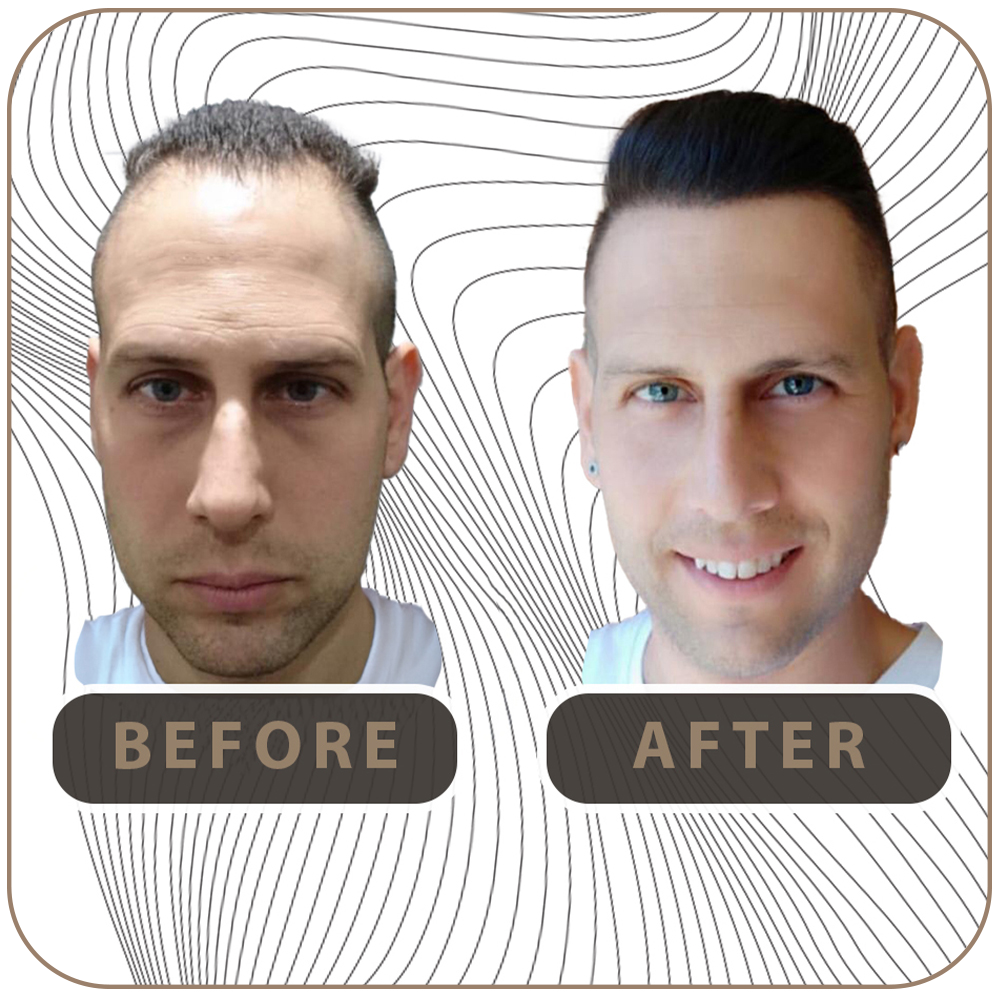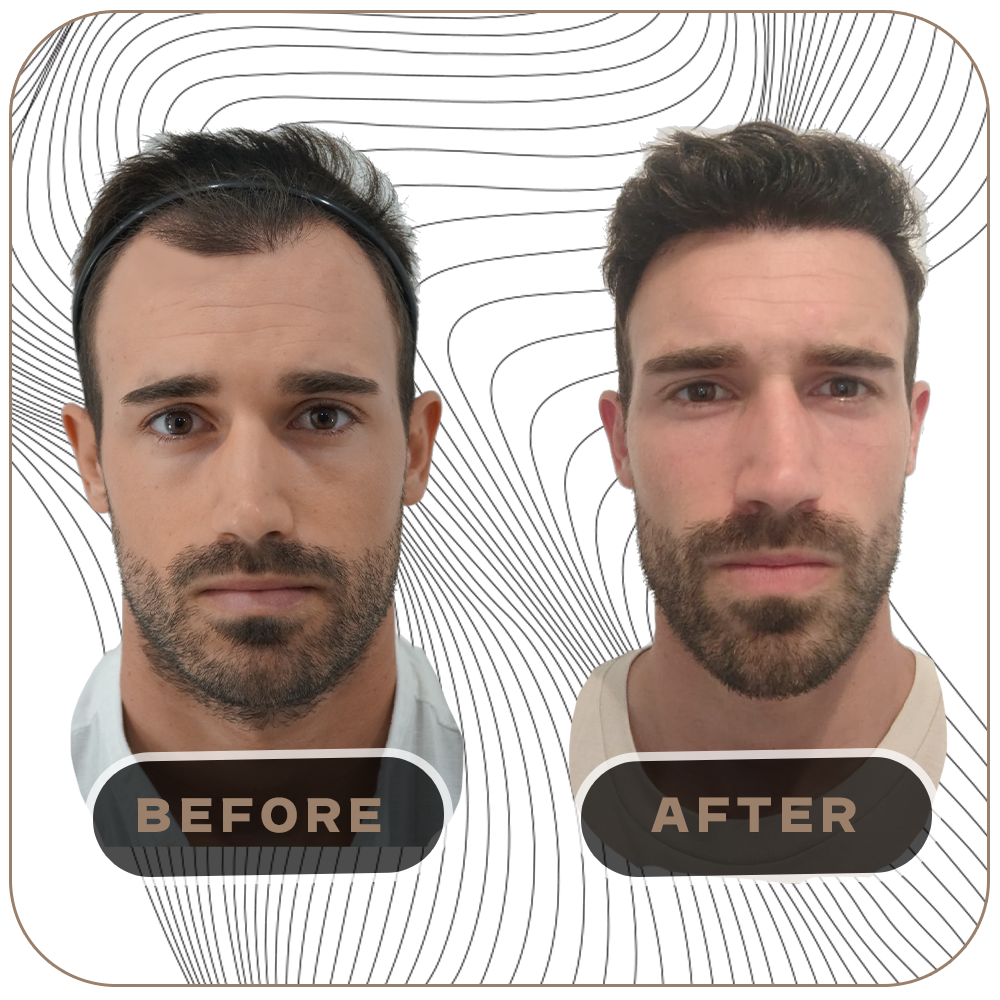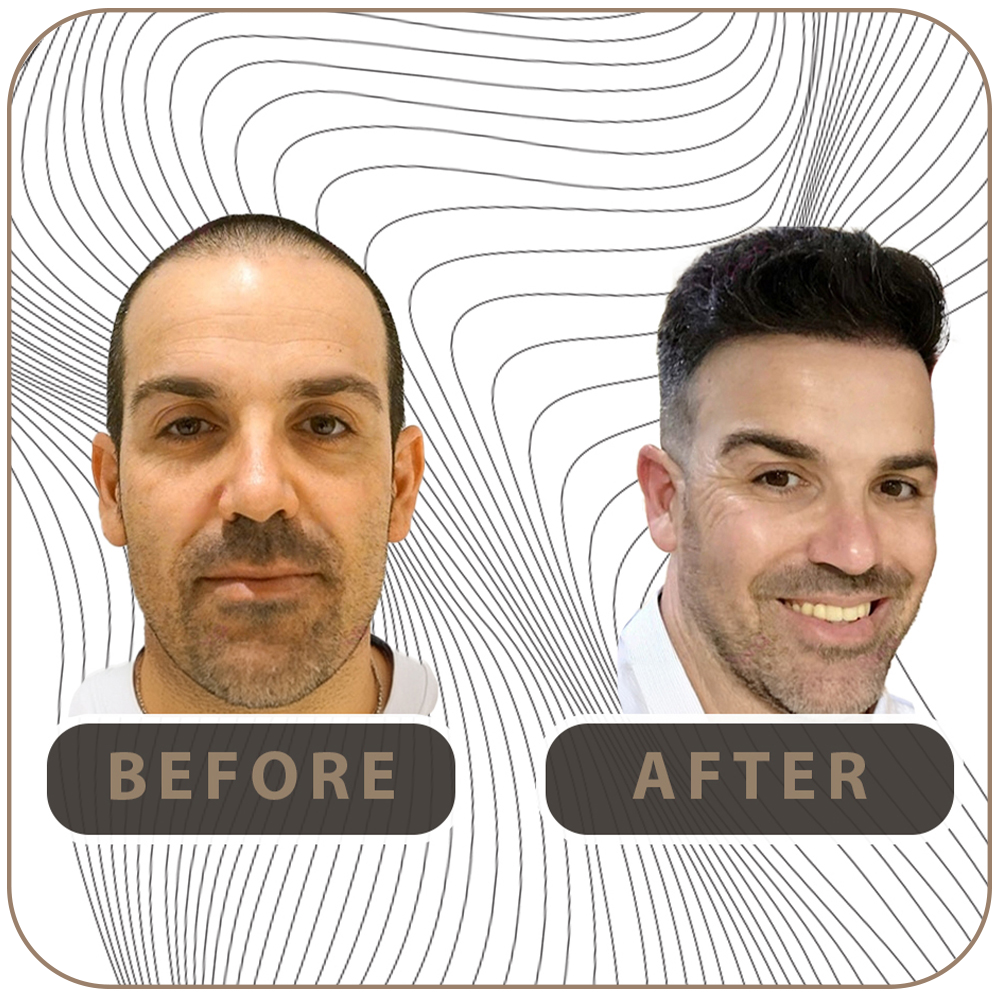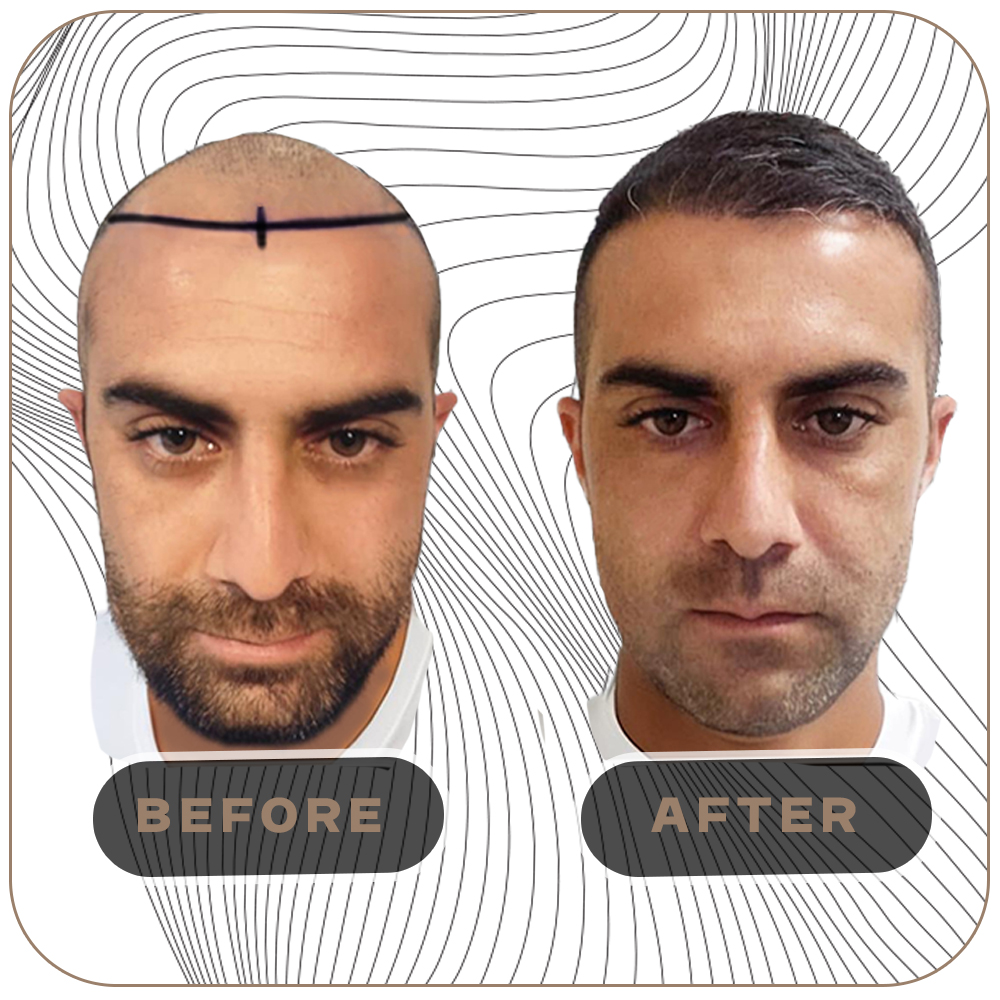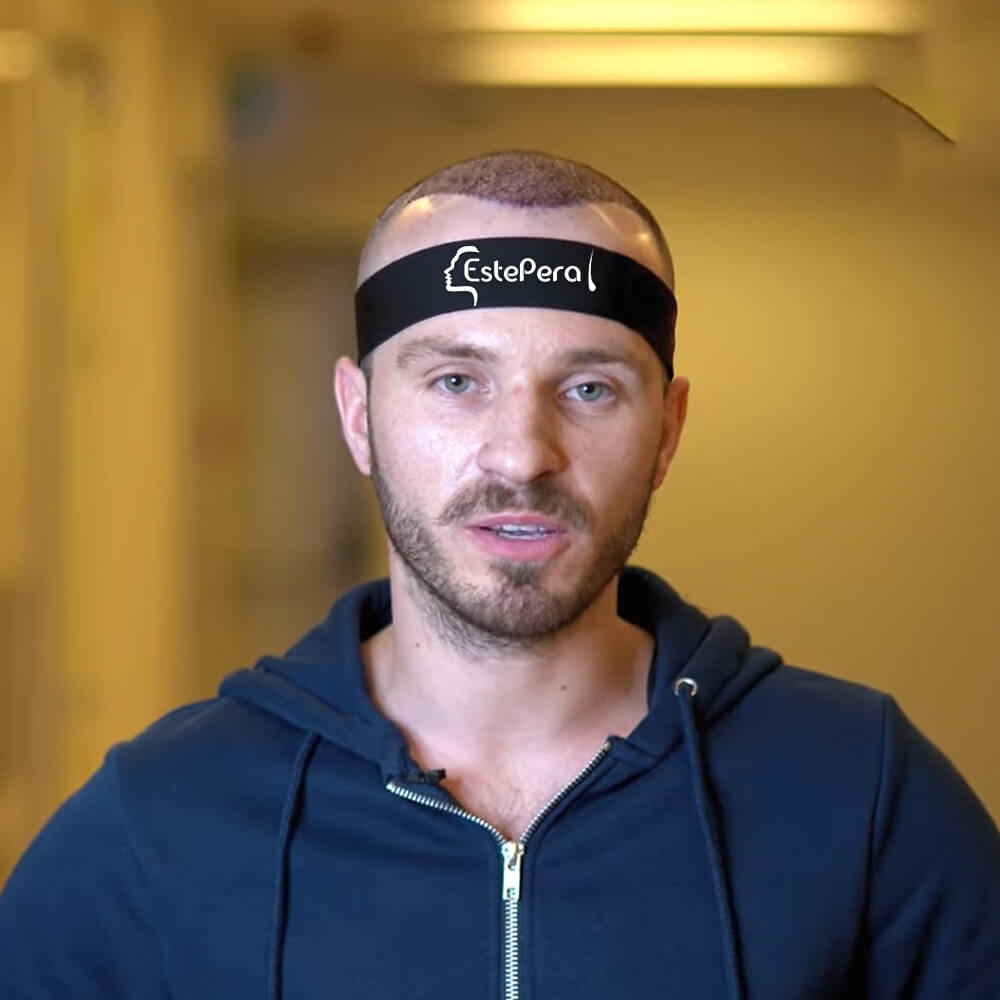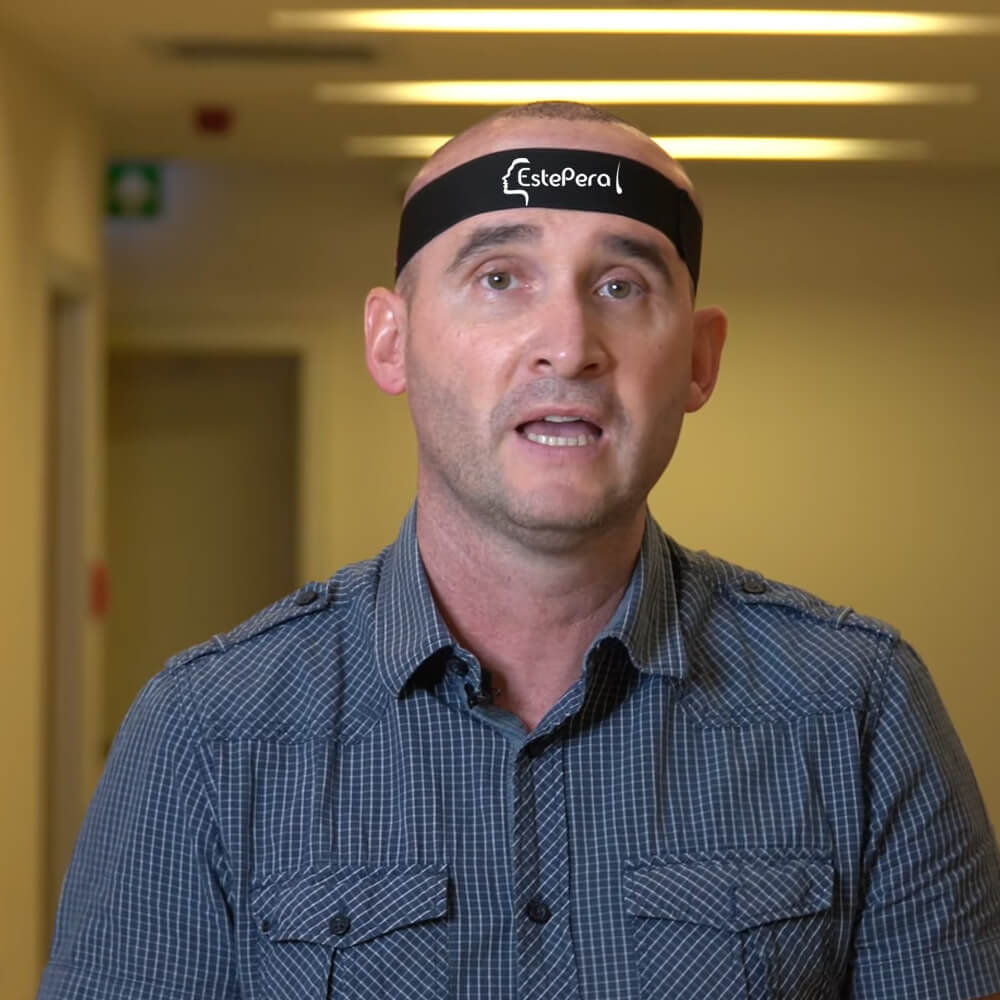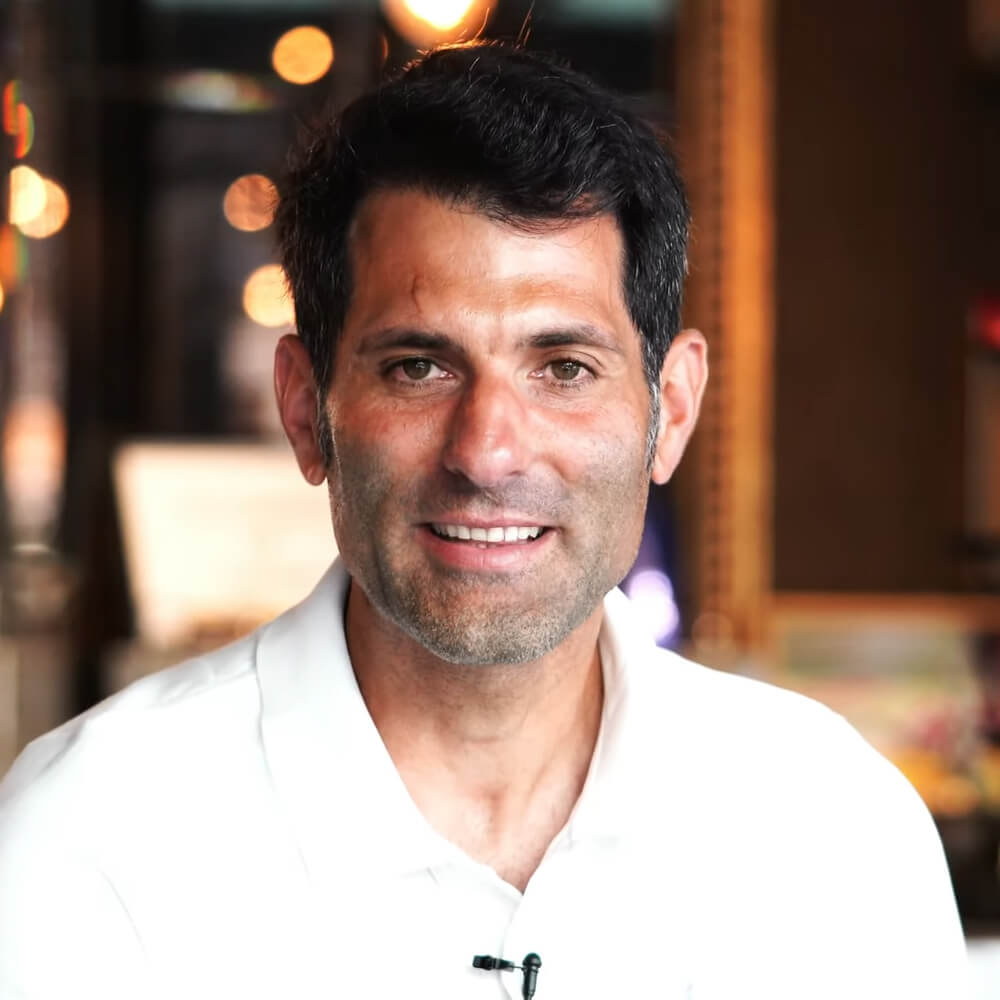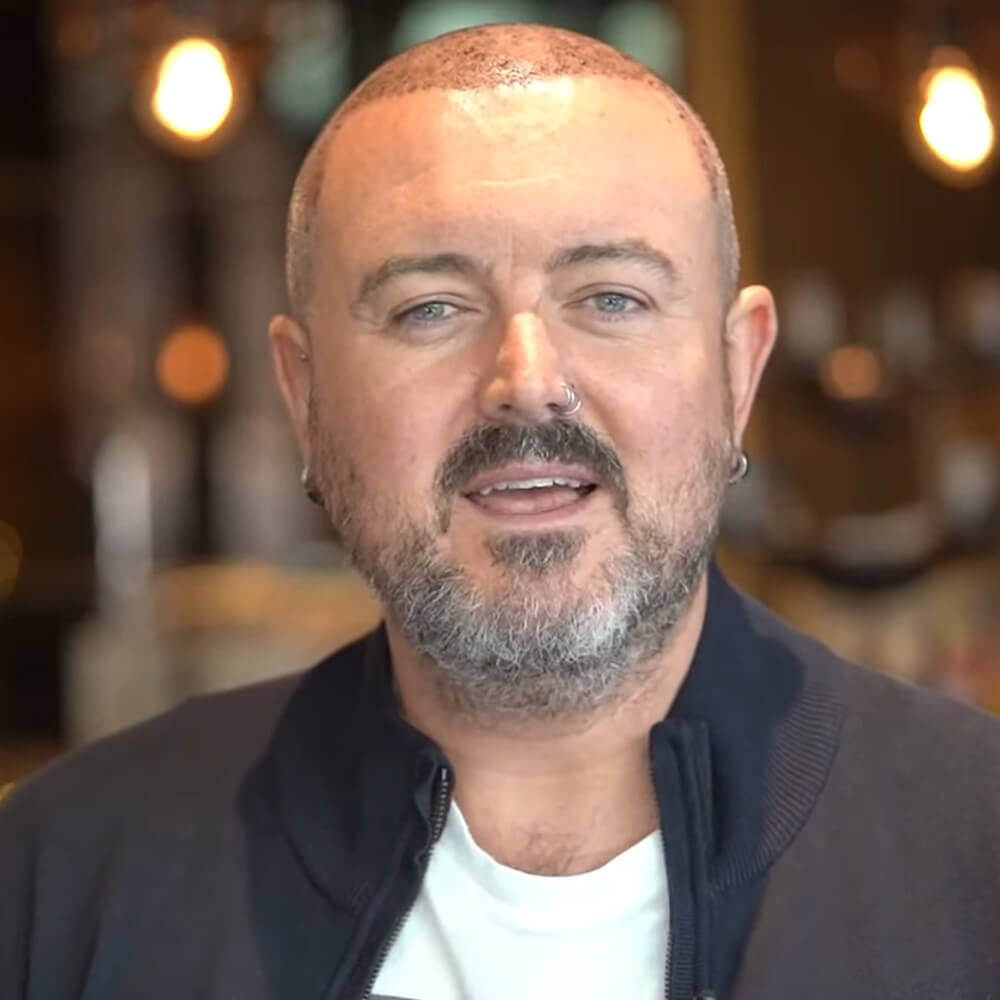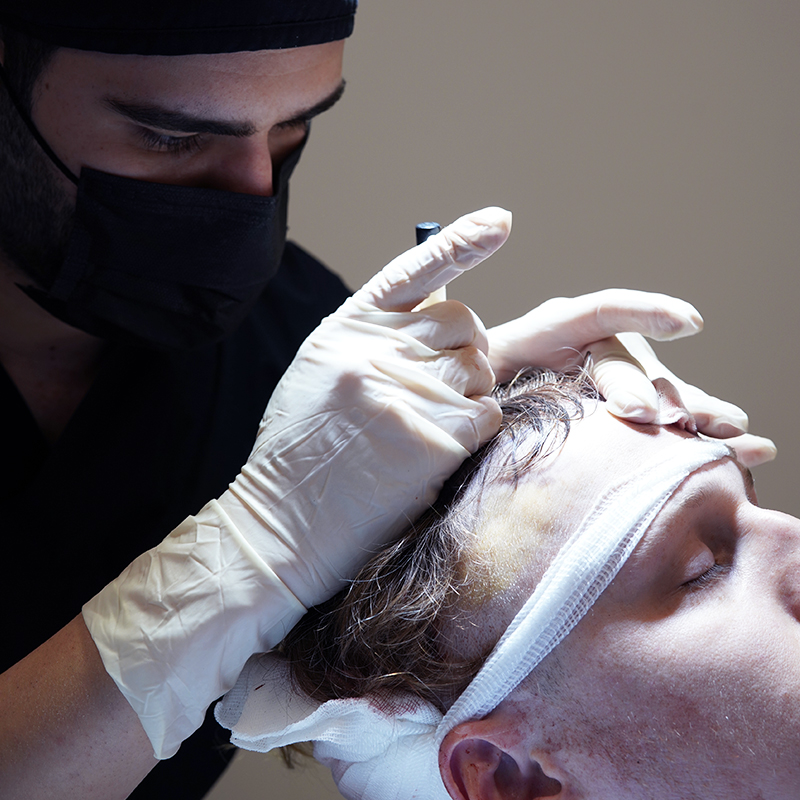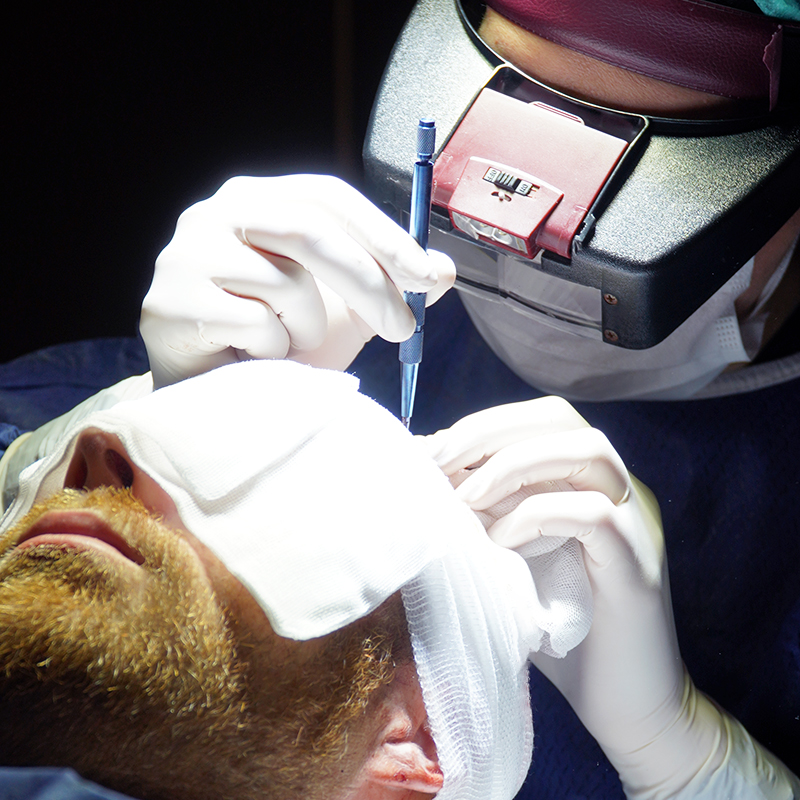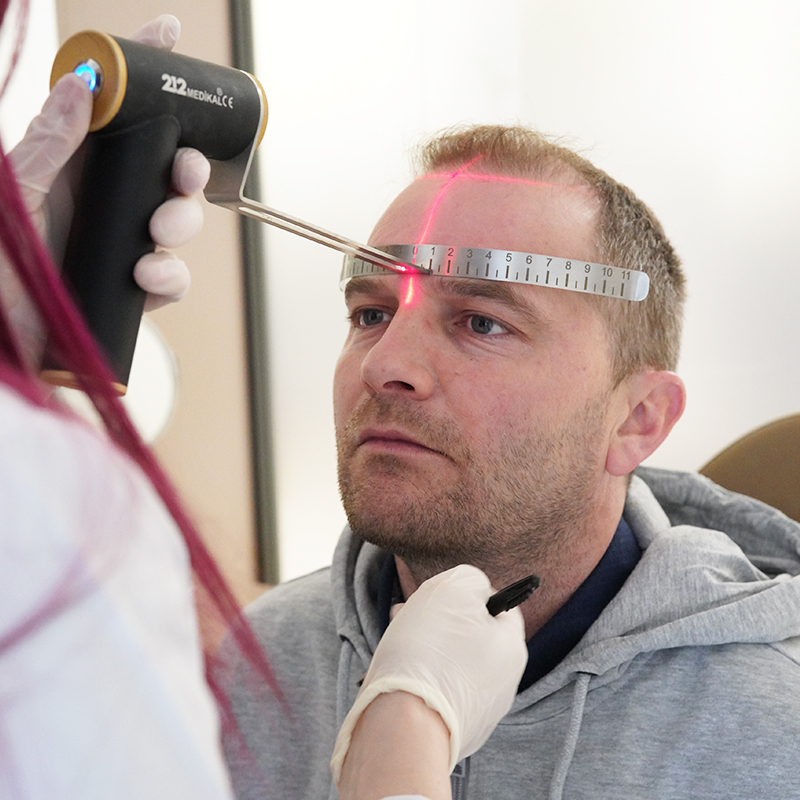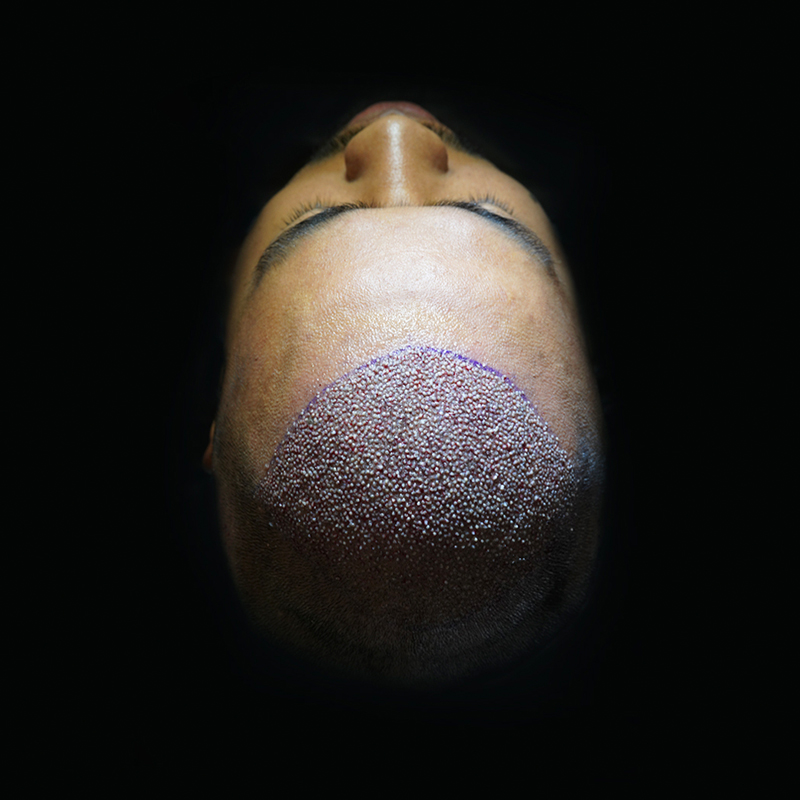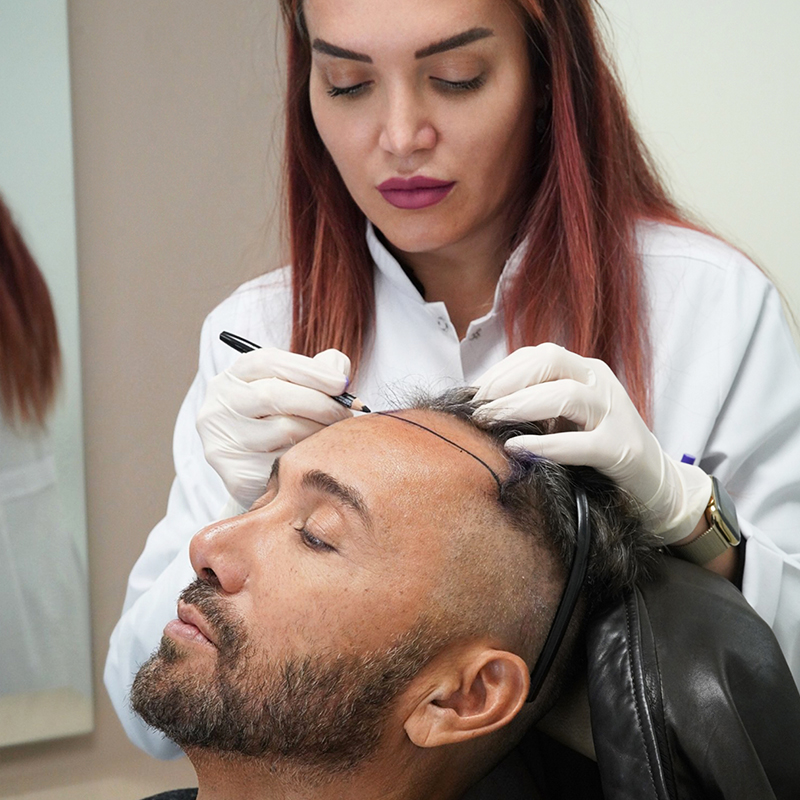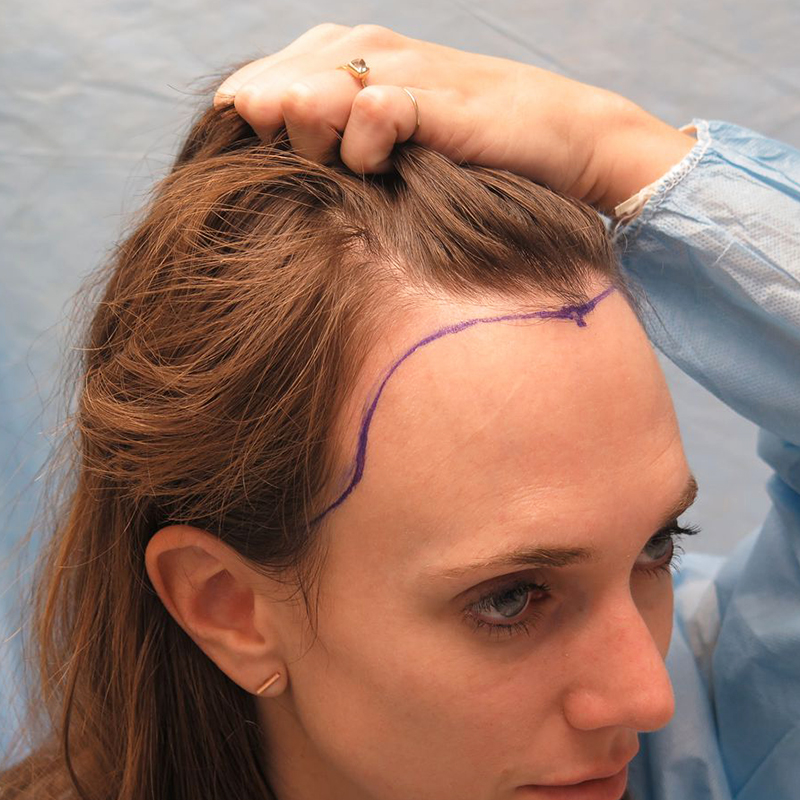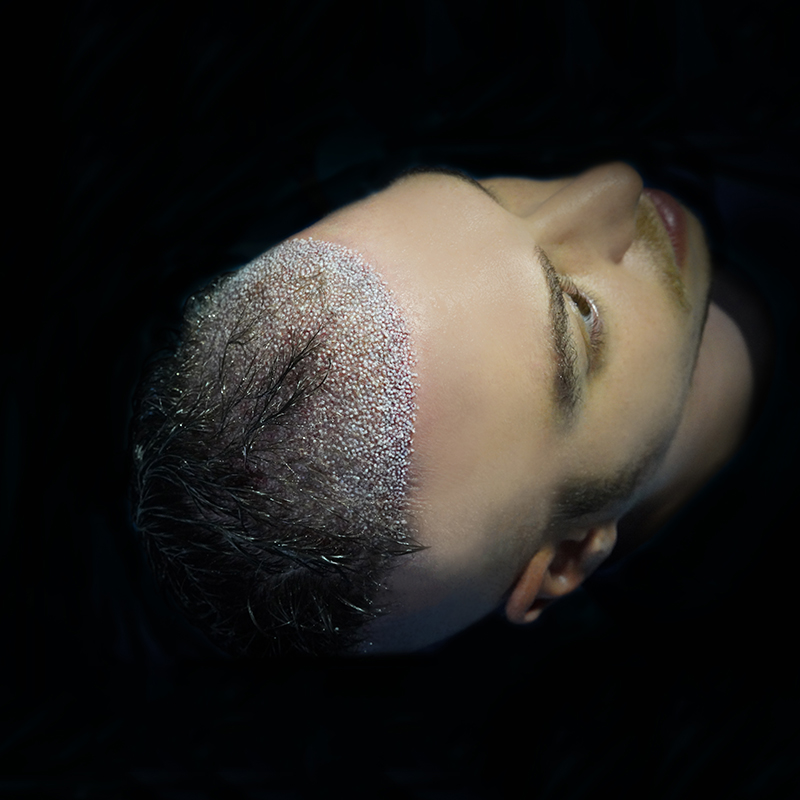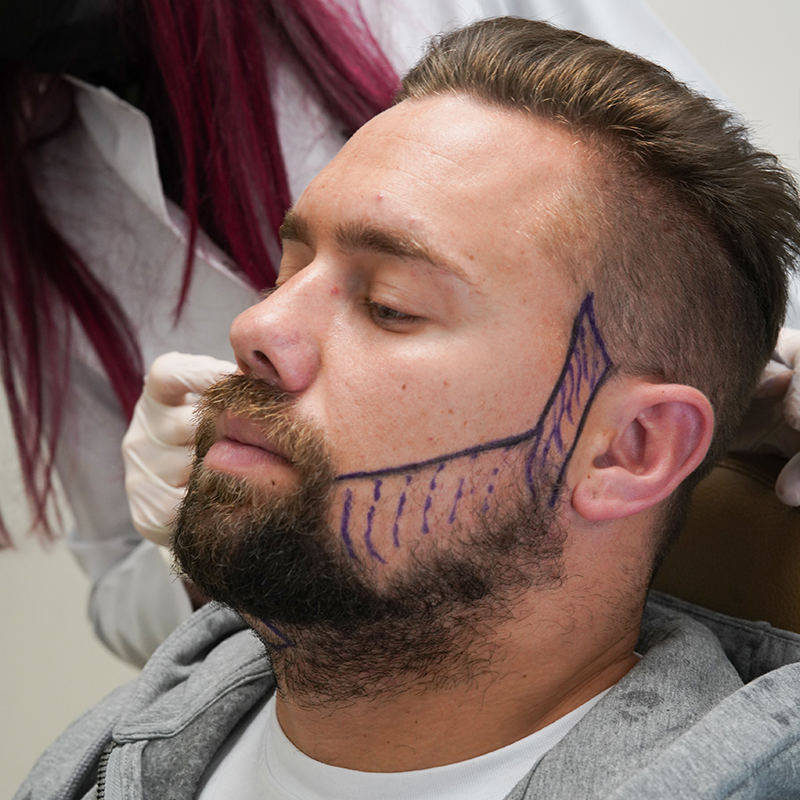- African – American(Afro) Hair Transplant in Turkey
- African-American Hair: What Makes Them Unique?
- Are You a Good Candidate for African-American Hair Transplant?
- The Procedure of African-American Hair Transplant
- Follicular Unit Extraction (FUE)
- Direct Hair Implantation (DHI)
- The Benefits and Advantages of Afro Hair Transplant in Turkey
- Recovery period
- Risks and side effects associated with African-American Hair Transplant
African – American(Afro) Hair Transplant in Turkey
Hair loss does not discriminate between different races and ethnicities, even if you are Caucasian, African-American or Asian, the possibility of experiencing hair loss or thinning of the hair at a point in your life is quite high, causing severe insecurity or lack of confidence. Many people of African or Caribbean descent feel hesitant about undergoing a hair transplant operation due to the concern regarding the success of the procedure. Considering the distinctive and unique nature of this hair type, the hesitation regarding the procedure sounds quite reasonable.
Since African American hair has a specific, curly type of hair root prone to damage, the transplantation operations require utmost attention and proficiency. However, with the intervention of a skilled and experienced medical team, combined with advanced surgical techniques such as FUE or DHI, there won’t be any difference between the restoration of African-American hair follicles and the other hair types in terms of effectiveness and success of the procedures.
As a matter of fact, the thick and curly nature of the afro hair can become an extra beneficial factor for the transplantation process. While the area considered as the donor site has typically low density of follicular units, the texture of the afro hair ultimately promotes the coverage as opposed to straighter hair types, allowing to the surgeon operate with a limited amount of hair follicles.
African-American Hair: What Makes Them Unique?
What makes black hair so different from other hair types? While black hair is biologically quite similar to other hair types, the differences in the hair’s elasticity and coils causes occurrence of unique needs. African-American hair contains more lipids compared to other hair types, and since these lipids are less bonded, African-American hair requires whole lot more oil. Moreover, the follicle size is much thicker and has a shape unique to itself, creating curved hair strands, while straighter hair is prone to growing from ffollicles which are in line with the bulb.
Black hair has a tendency to damage because of the shape of the follicles, and it is literally impossible to straighten the hair without minor damage to the hair. When the curl pattern is lost because of extensive heat, there occurs intensive hair damage which is rather common among black women.
As a result of these considerations, Afro-FUE and Afro-DHI hair transplants require maximum proficiency on the subject and a carefully designed plan of action. Despite this uniqueness, an acknowledged expert in the field will still be able to create desired outcomes with the help of advanced surgical tools.
Are You a Good Candidate for African-American Hair Transplant?
To be accepted as a candidate for African-American (Afro) hair transplant in Turkey, struggling with receding hairline or thinning of the hair and having patch spots on the scalp is usually a sufficient criterion expected to meet. However, during your initial consultation, your doctor will thoroughly examine your condition in order to determine whether you have an adequate amount of donor’s hair as well as your general health and possible medical conditions which can pose an obstacle regarding the operation.

The Procedure of African-American Hair Transplant
Although the ethnic background requires for assessment of certain characteristics of the hair, there is not much difference between the hair restoration techniques. The procedure of afro hair transplantation does not differ from the other techniques; the basic principle is still the same: hair follicles are extracted from the donor site with the help of a punch, and they are implanted to the targeted area where the hair loss is evident. For most natural-looking results, strategically positioning the curly hair follicles with an accurate angle and direction is the key issue.
Prior to your transplant session, you will have decided on which hair transplantation method you will opt for, considering factors such as your budget or the amount of time you can reserve for the operation.
Follicular Unit Extraction (FUE)
Being the most prominent method of hair transplant performed on African-Americans, Follicular Unit Extraction provides a naturally thicker appearance without any kind of invasion. To ensure the original growth pattern of the hair, the FUE surgeon must act with maximum caution with the purpose of mimicking the direction and the angle of the hair’s natural state.
After the local anaesthesia administered to your scalp takes effect, the extraction period will be initiated and using blades or forceps, an adequate number of grafts will be harvested from the scalp. As soon as the extraction is completed, the recipient area, which is designated in advance, will be incised for creating tiny slits for the next step. Finally, each of the extracted grafts will be placed into the incisions in accordance with the natural curl of the hairs.
Direct Hair Implantation (DHI)
Another effective method of hair transplantation on African-American descents is Direct Hair Implantation which is considered an upgraded version of FUE. These two procedures utilize the same extraction technique, differ at the incision and implantation stages.
As in the case with all transplantation techniques, the first step is the administration of the anaesthetic agent. As soon as the affected area becomes numb, with the help of an extraction instrument with a diameter of 1 mm, manually harvesting of the hair follicles is commenced. The extracted follicles are immediately implanted to the recipient site which does not require incising. In this way, the hair follicles remain outside the body for a very short time, thus providing a higher rate of hair graft survival. The implantation device used in DHI is known as the Choi pen which is able to contain 1 to 4 hair follicles at a time and requires an experienced and skilful team of doctors as they need to act with precise direction and angle.
The Benefits and Advantages of Afro Hair Transplant in Turkey
African-American hair transplant can create very pleasing results for both men and women affected by debilitating mental and physical outcomes of hair loss. Either Follicular Unit Extraction or Direct Hair Implantation, both techniques of hair restoration provide prominent benefits and advantages in regards to the patient, including:
- African-American hair transplant with FUE or DHI is minimally invasive, thus the results are almost undetectable. Also, the requirement of a competent surgery team makes it impossible to face unnatural-looking results.
- Afro hair transplant in Turkey is carried out under local anaesthesia; you will not feel any pain during the operation. You can even fall asleep.
- The absence of any kind of suture drastically decreases the amount of time necessary for recovery. Post-op care is easy, and recovery is fast. You will be able to return to your daily life the next day after the operation.
- The advanced surgical tools used during the operation contribute to the occurrence of minimal trauma to the scalp.
- Since there will be no linear scarring or visible stitches at the back of the scalp, the patient is free to sport all sorts of hairstyles whichever he/she chooses, even shaving is possible.
- Working with individual follicles almost guarantees the survival of the grafts since only the strongest and healthiest follicles are chosen for the operation.
- Each hair follicle will be implanted in accordance with the direction of the patient’s natural hair pattern, mirroring angles of the hairs. This approach improves the naturalness of the results, and the hair density significantly increases.
- Multiple donor sites make it possible to extract hair aside from the scalp if required.
- Since the amount of hair is as little as possible, the density of the hair is not affected by external interference.
Recovery period
Following the hair transplant operation, it will only take a few days to recover completely. as soon as the operation is completed, patients are free to return to their home, and after two days, they can go back to their daily routine, while avoiding strenuous activities such as swimming. The patient may consider taking a few days from work as there will be visible scabs and crusts at their affected areas.
If you wish to complete and even speed up the recovery as soon as possible, there are several precautions you should take and diligently apply, including:
- Before washing your hair, wait for a couple of days, and only use the cleaning products recommended by your doctor.
- Avoid extreme weather conditions as they can interfere with a recovery period.
- In order to reduce the swelling and bruising, apply an ice pack to the affected sites.
- Smoking and consuming alcohol disrupt the blood flow to the scalp, thus refrain from those for at least ten days.
- For about 3 to 4 weeks, gently comb your hair since rough movements can damage the newly implanted hair grafts.
- Abstain from doing physical exercises for a couple of weeks.
- Make sure you get enough rest.
- You may need to take medications such as painkillers, antibiotics or anti-inflammatory medications in line with the instructions of your doctor.
Your newly transplanted hair will fall out two to three weeks after the procedure; no need to panic as this is an expected part of the procedure. New hair growth will begin to occur as early as 3 to 4 months after the operation, and your brand new hairline will have reached to the desired consistency in about 8 to 12 months.
Risks and side effects associated with African-American Hair Transplant
Hair transplant for patients of African-American descent seems to be more complicated compared to hair types of other ethnicities due to the unique texture and the curly shape of the hair. As a result of this, afro hair transplant comes with several distinctive risks of its kind, including:
- Risk of potential scarring: It is common to see a higher risk of developing keloid scars when it comes to African-American patients. The occurrence of keloid scars is connected with the recovery period of existing scars or injuries. When skin takes damage, scar tissues cover the wound in order to repair and protect the injury. However, in some cases, the process transforms into the growth of extra scar tissues, forming growths called keloids, looking smooth and hard. These types of scars are more commonly seen in people with dark skin than the others. Therefore, it is very important to inform the patient about the risk of keloid scars forming in the donor area of their scalp. Patients with keloid scar history should discuss this with their doctor and ensure that all necessary precautions have been taken.
- The distinctive curly shape of the hair follicles in African-American descents also increases the risk of ingrown hairs or folliculitis, which is the infection or inflammation of hair follicles, though these conditions can be easily treated.
- Although hair transplantation procedures are considered safe now, it is not wise to ignore the general surgical risks incidental to all sorts of medical operations explained as following:
- Bleeding: Bleeding is one of the most common side effects patients may struggle with. While Follicular Unit Extraction or Direct Hair Implantation techniques are far less invasive as opposed to the traditional ones, there is still a possibility of some minor bleeding.
- Itching: Since the affected parts of the body are at a healing process, itching is commonly seen as a side effect of this operation, as well as others with similar procedures. The patient must resist the scratching urge, as it can cause displacement of newly transplanted follicles.
- Infections: Inflammation or infection of the hair follicles can occur as a complication of a hair transplant. This is a rare complication of the process, and if the medications prescribed by the doctor are used regularly, the risk of infections can be reduced to a great extent.
There is one more commonly seen complication that most patients of hair transplant surgeries often experience, namely ‘shock loss’. This refers to a sudden loss of newly transplanted hairs. It is not a serious side effect to be concerned about as the nature of this kind of operations usually requires the loss of hairs. That is to say, it is natural and paves the way for permanent hair growth. Since the follicles that were transplanted into the scalp will protect themselves, in a few months, the hairs which were lost will begin to regrow.










